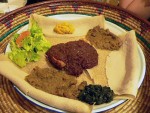Some traditional foods we feature on Eat Your World can be downright unhealthy—think of all the fried chicken and regional hot dogs!—but others, as our intern (and nutritional-science student) Carina found, include superfood ingredients that give a real nutritional boost. We swear.
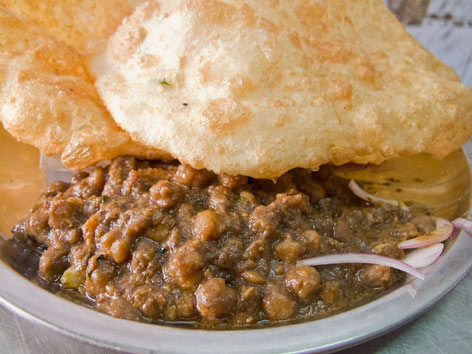
Chole bhature in Delhi
CURCUMIN
Nutritional benefits: Curcumin, the compound that gives turmeric its pungent flavor and bright-yellow color, is a potent anti-inflammatory and antioxidant, enabling our bodies to neutralize harmful free radicals. It reduces plaque buildup in the brain, which is thought to contribute to Alzheimer’s disease [1]. Furthermore, a substantial, lifelong consumption of curcumin has been shown to significantly reduce blood cholesterol and clogged arteries [2], making it a champion in curbing heart disease. This is powerful yellow stuff!
Commonly found in: Indian curry dishes
Where in the world to taste it: The rich cuisine of North India packs a hefty punch of curcumin in some of its best dishes, like chole bhature and butter chicken, as well as in its Western-palate-friendly cousin chicken tikka masala, Britain’s national dish. It shows up in unexpectedly sweet places, too, like in Cambodia’s turmeric and rice flour crepes.
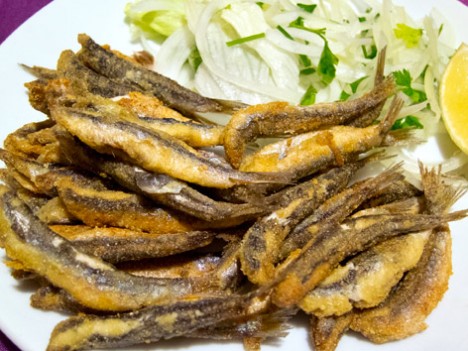
Hamsi tava from Sinop, Turkey
OMEGA-3 FATTY ACIDS
Nutritional benefits: These fats may help lower cholesterol, which, in turn, promotes healthier heart function [3]. Those with high blood pressure may be especially interested in adding omega-3s to their diet, as they help lower blood pressure by dilating blood vessels [4]. And that’s not all: Omega-3 fatty acids are the key to a glowing complexion! They decrease the body’s production of inflammatory compounds, which translates to less acne, bumps, and blemishes. A good fat, indeed.
Commonly found in: Walnuts, fatty fish
Where in the world to find it: Mediterranean countries tend to boast cuisines high in omega-3s. Witness, for example, Turkey’s delicious walnut-heavy regional specialties—from baklava to the Black Sea coast’s islama and mantı—and its many small fish, like the beloved hamsi, or Black Sea anchovy.

Rhode Island's tomato pie
TOMATOES
Nutritional benefits: Tomatoes are high in lycopene—a powerful antioxidant that helps prevent various cancers—as well as beta-carotene and vitamins E and C [5]. The combination of compounds in each of these plump red fruits is a weapon against any potentially damaging free radicals in the body. Additionally, tomatoes contain potassium, and just one half-cup of tomato sauce (about the amount on a large slice of pizza) provides quite the dose of it, at 454 milligrams [6]. Potassium is important for regulating the body’s electrolyte balance, so pizza's not a bad post-workout recovery meal!
Commonly found in: Italian food, Italian-American food
Where in the world to find it: Uh, pizza is healthy, right? Some of the most tomato-y pies are found in Rhode Island and New Haven, but the world’s best are in Naples.
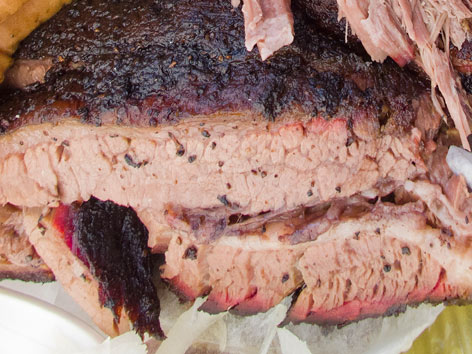
Beef brisket in Austin
RED MEAT
Nutritional benefits: Red meat is high in iron and vitamin B12, which isn’t found in white meats or vegetables. Iron’s a pro at helping your red blood cells deliver oxygen to all your muscles and organs. Sleepy much? Tiredness and lack of energy is a common symptom in those who don’t have enough iron. Vitamin B12 gives a major boost to your immune system [7], helping to ward off everything from nasty colds to threatening diseases. It’s a flu-season must in your diet!
Commonly found in: Burgers, BBQ
Where in the world to find it: U.S. road trip, anyone? Americans consume more red meat than any other type—it accounts for about 58% of meat consumed here per year [8]—so the U.S. is a good place to start. One of the best spots for B12, then, is Austin, Texas, where brisket is king. Out west in sunny Los Angeles, stop for a French dip sandwich with roast beef at the iconic Phillipe the Original, or swing by beloved In-N-Out Burger for an animal-style burger. Of course, as is the case with many foods, moderation is key with red meat: Too much in the diet can put a lot of unnecessary saturated fats in the body, which can lead to heart problems (not to mention the huge environmental toll of beef). The occasional splurge is the spice of life, however, and our favorite might just be a pastrami sandwich at New York’s Katz’s Deli.
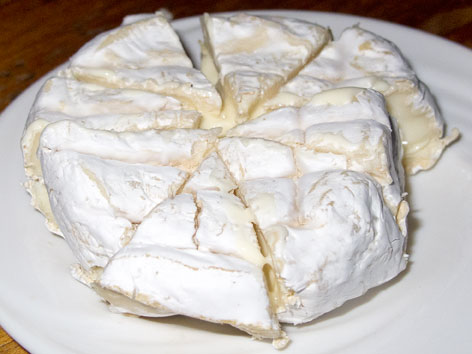
Local cheese in Amsterdam
WHOLE MILK
Nutritional benefits: The vitamins in dairy products (primarily A and D) are at their peak levels in the body only when consumed with the essential fats found in whole milk. Both vitamins A and D are transported in the bloodstream in the same manner as dietary fat [9]—this (counterintuitively) means that the higher the fat content of a food, the better use your body will get out of its vitamins. The type of vitamin A found in milk is vital for growth, good vision, and a healthy immune system. Without enough vitamin D, the body becomes prone to an endless list of health issues, including cardiovascular disease, skeletal deformities, and impaired cognitive abilities. Yes, you want these vitamins in your life.
Commonly found in: Any dairy product that still has every ounce of its original fat—skimming, boiling off, or separating the fat out does not count!
Where in the world to find it: The Greeks are more famous for their yogurt, but the Turks have a special way with the stuff too, especially when it comes to yogurt mezes. You can look for good local cheese everywhere you go, whether it's Gouda in the Netherlands or Stichelton blue in England. And alas, another reason we all scream for ice cream: We loved the silky frozen custard at Anderson’s, in Buffalo, New York—the perfect reward for crossing Niagara Falls off your travel bucket list.

Cafe Cubano in Miami
COFFEE
Nutritional benefits: Your morning cup of joe is most notorious for boosting metabolic rate, which helps you maintain a healthy body weight. But there’s more good news, particularly for vegans: Coffee contains riboflavin, a B vitamin mostly found only in milk, meat, and eggs [10]. Riboflavin is important for the development and function of your skin, as well as preserving the lining of your digestive tract—overall a winner for keeping a youthful physiognomy.
Commonly found in: your favorite neighborhood java joint
Where in the world to find it: Coffee is rather easy to come by around the globe, but we have a few favorite regional variations (surprise, surprise). In the U.S., wake up with a café Cubano in Miami, or get your dose of java in a nightcap of Irish coffee in San Francisco (also be sure to check out that city’s third-wave coffee shops, many of which roast their own beans). Not a fan of traditional hot coffee? In Rhode Island, consider a sweet, cold coffee milk to pair with your hot wiener, the local style of hot dog there. If your travels take you to Mexico, make like a Oaxacan and get thee a pot of café de olla, an aromatic combination of raw brown sugar, cinnamon, and local coffee.
SOURCES
[1] http://www.ncbi.nlm.nih.gov/pmc/articles/PMC2781139/
[2] http://www.ncbi.nlm.nih.gov/pubmed/19151449
[3] http://www.eatright.org/Public/content.aspx?id=6442474783
[4] Byrd-Bredbenner, Carol, Gordon M. Wardlaw, Gail Moe, and Jacqueline Berning. Wardlaw's Perspectives in Nutrition. 9th ed. Dubuque, IA: McGraw-Hill, 2013. Print.
[5] http://www.webmd.com/vitamins-supplements/ingredientmono-554-lycopene.aspx?activeingredientid=554&activeingredientname=lycopene
[6] http://www.webmd.com/food-recipes/features/health-properties-tomatoes
[7] http://www.webmd.com/food-recipes/guide/vitamin-b12-deficiency-symptoms-causes
[8] http://www.ncbi.nlm.nih.gov/pmc/articles/PMC3045642/
[9] Byrd-Bredbenner, Carol, Gordon M. Wardlaw, Gail Moe, and Jacqueline Berning. Wardlaw's Perspectives in Nutrition. 9th ed. Dubuque, IA: McGraw-Hill, 2013. Print.
[10] http://www.webmd.com/food-recipes/features/coffee-new-health-food
About the author: Carina Chiodo, a native of the San Francisco Bay Area and an Eat Your World intern, recently graduated with a degree in English and psychology, after studying abroad in Florence, Italy. She hopes to have a future career in food writing, but in the meantime is pursuing a master’s degree in nutrition, planning her next trip to Europe, and eating dessert seven days of the week. Check out her EYW profile here.
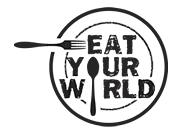









.jpg)
